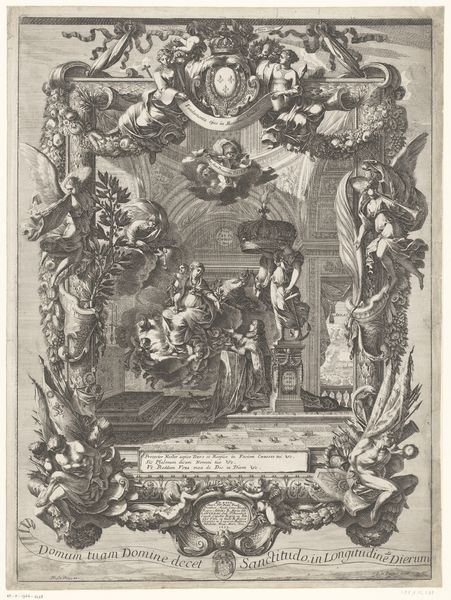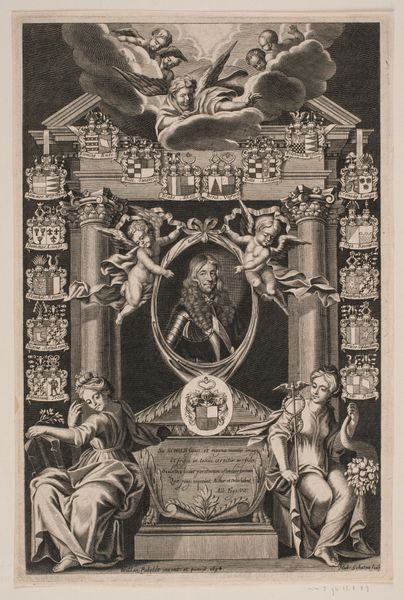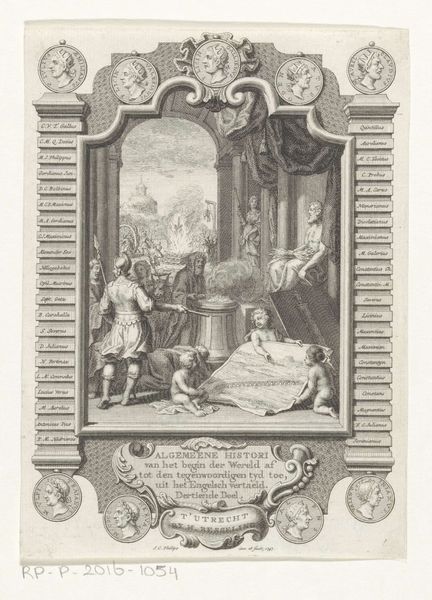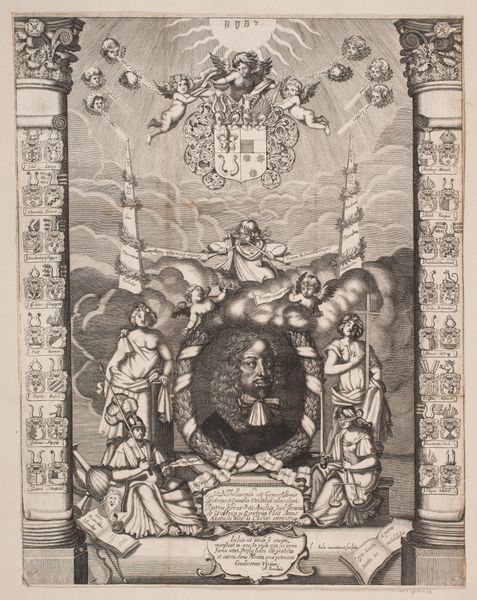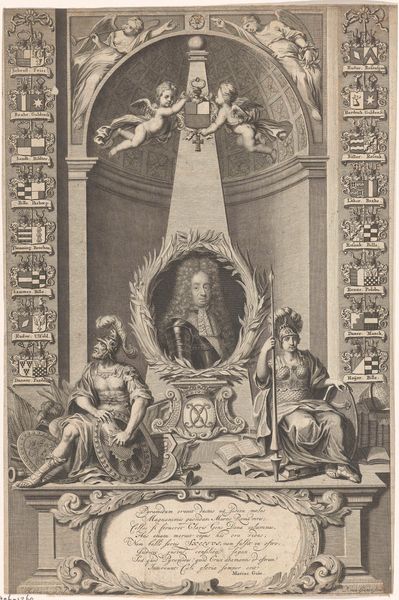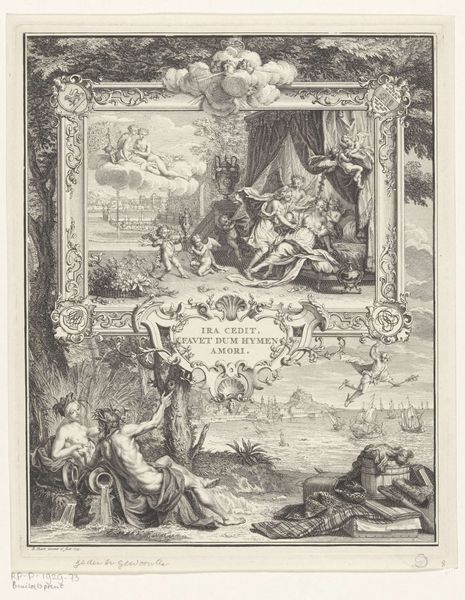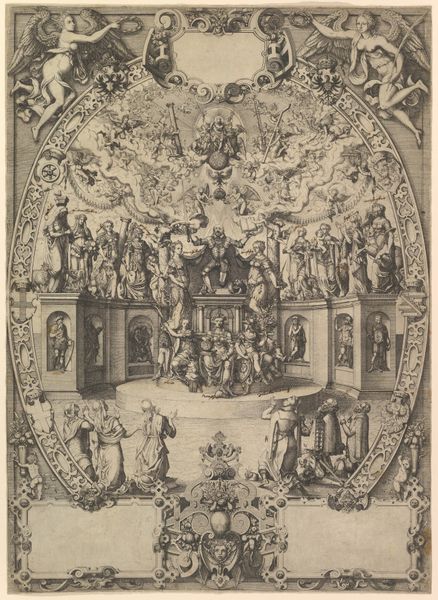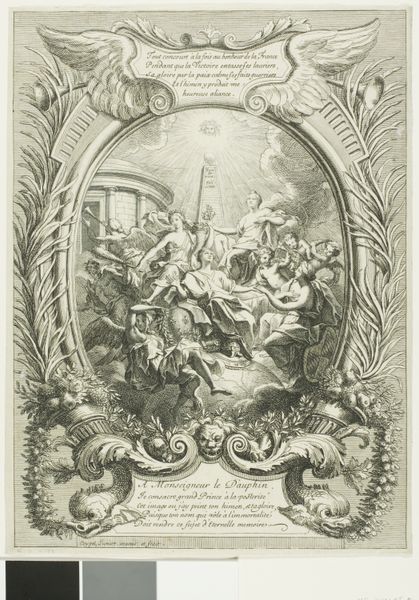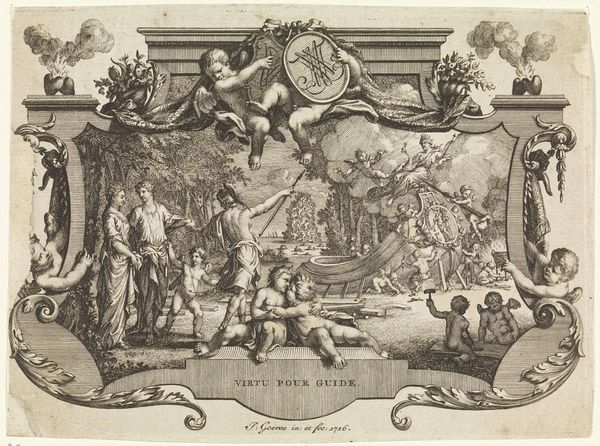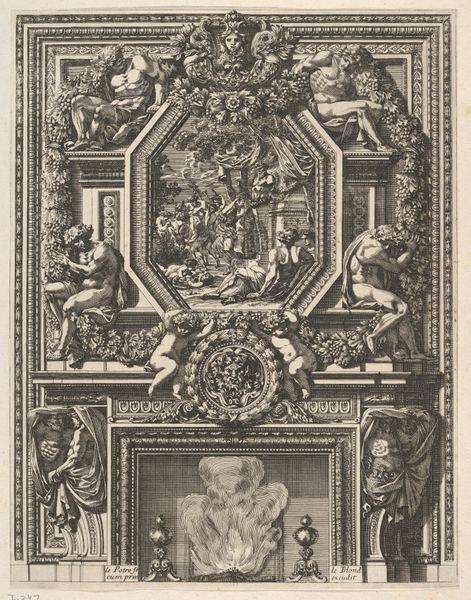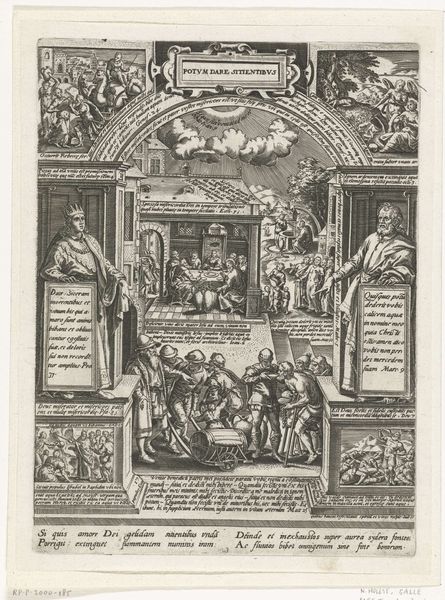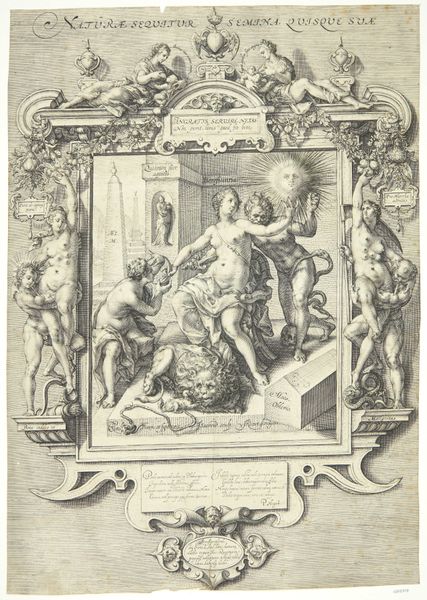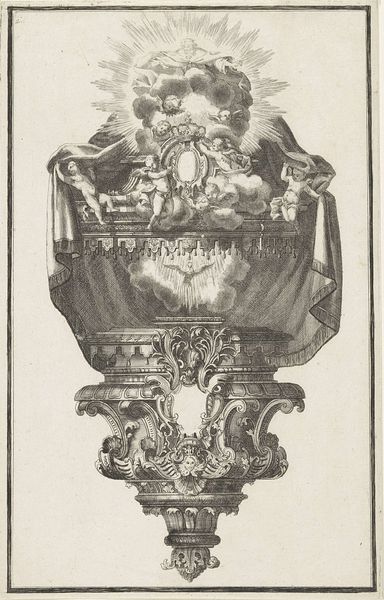
print, engraving
#
portrait
#
baroque
#
pen drawing
# print
#
pen illustration
#
pen sketch
#
old engraving style
#
figuration
#
history-painting
#
engraving
Dimensions: height 592 mm, width 500 mm
Copyright: Rijks Museum: Open Domain
Curator: Pieter van den Berge created this engraving in 1708, celebrating the marriage of King John V of Portugal. The print showcases the royal couple within elaborate decorative frames. Editor: It’s a bit overwhelming, isn’t it? All those figures tumbling around the central portraits… almost chaotic. But the central portraits are very stately, stoic even. Curator: It reflects the Baroque aesthetic, aiming for grandeur and to convey power through visual complexity. Engravings like this were powerful propaganda tools. It reminds us that depictions of power often involve many carefully designed symbols, framing the figures within culturally legible power structures. Editor: I see that – allegorical figures, military symbolism… It really speaks to how marriages like this were political events, less about love and more about solidifying alliances. Look how tightly the couple are framed between martial eagles and what appears to be two deities on each side… almost like a theatrical play set. Curator: Exactly. The Rijksmuseum, where this engraving is housed, possesses an incredible collection illustrating the pervasive role of such imagery in the construction and maintenance of political power throughout history. Notice how it merges portraiture with history painting in a medium—printmaking—which enabled broad circulation and consumption of politically significant narratives. Editor: Makes me wonder how this image was received. Did it actually bolster public support, or were people more critical of these lavish displays, especially when daily life could be difficult? Was this distributed mostly amongst nobility or wider society? Curator: Those are key questions. The impact certainly varied by social class and location, but overall, it served as visual reinforcement of the established order and its supposed divine legitimacy. Editor: And for me, as someone concerned with gender and representation, it is worth analyzing Maria Anna’s role within the marriage. Is she equally represented here, or are her qualities subservient to his? These are the kinds of nuanced interrogations this imagery encourages. Curator: The historical value in these prints extends beyond pure aesthetics, giving valuable insight into contemporary social dynamics and, critically, how elites at the time sought to legitimise their position. Editor: It definitely reveals how those in power wanted to be seen and, I suppose, to have us remember them. It is through unpacking works like this, and considering all the possible counter-narratives, that we move towards an evolved understanding of history and identity.
Comments
No comments
Be the first to comment and join the conversation on the ultimate creative platform.
